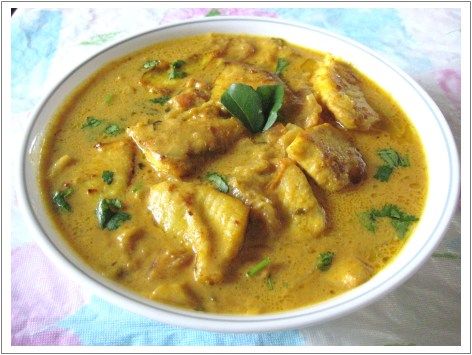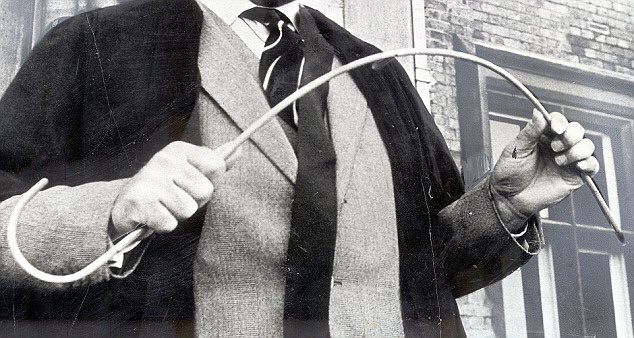Bangkok, 12 August 2015
Last weekend, my wife informed me excitedly that she had discovered a restaurant downtown which claimed to serve Reuben and pastrami sandwiches. Goodness me, we chirruped to each other, it had been years since we’d eaten either. We had to go back to the late 1980s, when we lived in New York for a while, for our last Reuben and pastrami sandwiches. The seminal initiation event was in a small deli to the south of Central Park, one of those places with booths where you slide into your seat (although unfortunately it didn’t have the really cool little juke box that you can see in this picture).

We had actually gone in there because we happened to be in the neighbourhood and it happened to be lunch time. Since it also happened to be a Jewish deli, we found ourselves scanning a menu listing Jewish delicacies. After some rumination, we plumped for this thing called a Reuben sandwich and this other thing called a hot pastrami sandwich. What an experience! The deli owner looked on amusedly as we oohed and aahed over our two sandwiches. Thereafter, we ate them regularly during the rest of our stay in New York.
So even though we had had a traumatizing experience two months ago with coq au vin, we decided to risk it. This time, we were not disappointed. We were served very creditable Reuben and pastrami sandwiches. I have a picture of the Reuben sandwich we ate.

But in our haste to devour the pastrami sandwich we forgot to take a photo of it. Which is a pity, because if I have to choose between the two, I would plump for the pastrami sandwich, and in fact the rest of this post is about pastrami.
No matter, I can throw in here a photo of a pastrami sandwich from Katz’s Deli.

This deli, which is on Houston Street in New York, is claimed in certain quarters of the internet to be “the keeper of the Jewish culinary flame” in the city.


Strong claim indeed! Never having been to the establishment myself, I can’t tell you if this claim is reasonable (although I will note that my daughter has been there and was not that impressed by their pastrami sandwich – but then, she doesn’t much care for pastrami in the first place).
Before I get into rival claims, of which there are many in this field, let me quickly review the making of pastrami (something which I’d always vaguely asked myself about but had never bothered to check until I decided to write this post). Start with a cut of beef from around the animal’s navel, the so-called plate cut (you can also use brisket – more of this choice in a minute). Cure it with salt and saltpeter and let it dry for several weeks (you can also throw some herbs into the curing mix). Once cured, rub and coat your meat with a mix of herbs (as you can imagine, the precise make-up of this coating is a trade secret, jealously guarded by rival delis, but onion, garlic, black pepper, coriander seed, possibly sugar, all seem to be common ingredients). Once nicely coated, smoke it at low heat for several days (the precise wood used for the smoke being again a closely guarded trade secret).
So far, so good. This is no different from the preparation of many dried, cured meats around the world, and before the advent of refrigeration these methods had been used by human beings in one combination or another for thousands of years to preserve meat. It’s the next steps where it gets interesting. After smoking, you first boil the meat to cook it, and then steam it for some 15 minutes. These last steps seem to have to do with the cut of beef used. Initially, pastrami was a poor man’s dish. People used the plate and brisket cuts because they were the cheapest, and they were the cheapest because they are fatty and gristly. Boiling and steaming was used to soften both the meat and all those difficult-to-chew parts in the meat.
Then you serve it, fresh from the steamer, on rye bread; actually, it’s a wheat-rye bread, of a kind that the not-too-poor people used to eat in Europe (wheat bread was only eaten by the rich, while the poorest people ate horsebread, so called because it was made of the cheaper grains fed to rich men’s horses). The sandwich should always be served with a pickle (or two or three) on the side. To me, this is capital; the sharp astringency of the pickle offsets nicely the fattiness of the pastrami. It’s often served with coleslaw, but frankly that can be left out, at least the kind of commercial gooey coleslaw that tends to be served nowadays. It adds no real value to the dish that I can see.
The alert reader may have noted a stress in the last couple of paragraphs on poverty. This allows me to segue smoothly into a discussion of pastrami’s history. Pastrami researchers have concluded that its roots are to be found in New York’s community of Romanian Jews, who emigrated to the States in the late 1800s. They were escaping from Romania’s increasingly organized and ethnically-tainted anti-Semitism as well as looking for better economic opportunities. Like millions of other people, they would have transited through Ellis Island

and then been sucked into the slums of New York.

There, like all immigrants everywhere and at all times, they would have tried to maintain their culinary traditions, and one of these was a dried, cured meat called pastramă (in the early days, New York’s version was called pastrama, which was then changed to pastrami so that it could rhyme with salami, the idea being that this would help people remember it – an early form of the marketing jingle). But as is also often the case, they would have had to modify it to fit the ingredients they could find in their new homeland. And here the change was radical. In Romania, pastramă tended to be made with mutton or goose or even veal (but that must have been a rich man’s version; poor people didn’t eat veal). But what Romanians found in New York was beef (pork also, but that was non-kosher), so beef-based their pastramă became. And because they were poorer than poor, they used the cheapest cuts of beef, the plate and brisket. I suppose it was the fact that pastramă made this way was really chewy that led them to take the extra steps of boiling and steaming. The common Romanian way of eating pastramă is grilled. In fact, pastramă sounds to me like the Romanian version of bacon. Bacon, which is also a cured and dried meat (pork in this case), is also grilled before eating, and it is often eaten with eggs, as is grilled pastramă.

Or was it maybe this gentleman (at the back with the white headgear) who introduced the boiling and steaming steps?

This gentleman is Sussman Volk, an Orthodox Jew of Lithuanian ancestry. He is credited with having introduced pastrami to New York, and through New York to the rest of the world. He had emigrated to the States and had eventually opened a small butcher’s shop on Delancey Street. One day, so the story goes, a Romanian Jew came in and asked if he could store a trunk in the shop’s basement while he went back to Romania. Rab Volk agreed, and in return he got the recipe for pastrami. So Rab Volk started making pastrami, and then people wanted it on a slice of bread, and then he put chairs and tables in, and suddenly he was running a delicatessen. And the rest is history, as they say (just to close the circle, the following year Katz’s Deli opened). It could be that the recipe given to Rab Volk already included the boiling and steaming steps, or it could be that Rab Volk – reaching back into his Lithuanian culinary roots, or maybe other immigrant culinary roots – introduced the boiling and steaming steps himself.
Who knows? In the end, it doesn’t matter. This is the way pastrami is made, and that’s that.
If readers were to think that the story ends here, they would be wrong. Because Romanian Jews also emigrated to Canada, settling in Montreal. And there they also introduced Montrealers to another son-of pastramă, in this case just called smoked meat. The two – relatively small – differences between the two products are the cut of beef used (smoked meat tends to use more brisket) and the mix of herbs used to rub and coat the meat (the fact that both boil/steam the meat suggests to me that these were introduced by the Romanian émigrés rather than by Rab Volk). Schwartz’s Deli in Montreal seems to be a good candidate for “the keeper of the Jewish culinary flame” in Montreal, so I’ll throw in a photo of the deli.

And here is the product

Mmm, that looks gooood!
And now the Montrealers have boldly brought the fight to New York. A Canadian couple has set up a new Jewish deli in New York, the Mile-End deli. They’ve opened one shop in Brooklyn and another in Manhattan, in Bond Street.

Well, the next time my wife and I go to New York, we (or at least I) will forget about visiting the Metropolitan Museum or any other worthy institution. First stop will be Katz’s Deli and then Mile End Deli. To compare and contrast the two products.
_______________
Empty booth in a diner: https://hautevitrine.files.wordpress.com/2011/11/empty-booth-rockin-johnnys-diner-ottawa-2007.jpg (in http://hautevitrine.com/page/17/)
Reuben sandwich: our pic
Pastrami sandwich, Katz’s deli: http://ilovekatzs.com/wp-content/uploads/2011/11/pastrami1.jpg (in http://ilovekatzs.com/)
Katz’s Deli: http://animalnewyork.com/wp-content/uploads/katz_artgalll.jpg (in http://animalnewyork.com/2013/katzs-deli-opening-an-art-gallery-and-pop-up-shop/)
Katz’s Deli inside: http://www.sheilazellerinteriors.com/wp-content/uploads/2011/02/00-20-Inside-Katz.png (in https://carileee.wordpress.com/2011/11/05/dining-101-new-york-katzs-deli/)
Immigrants at Ellis Island: http://history105.libraries.wsu.edu/fall2014/wp-content/uploads/sites/3/2014/08/Ellis-Island.jpg (in http://history105.libraries.wsu.edu/fall2014/2014/08/28/jewish-immigration-in-the-1940s/)
Mulberry street NYC: https://theselvedgeyard.files.wordpress.com/2011/02/mulberry_street_new_york_city_loc_det-4a08193.jpg (in http://piedader-letspractiseenglish.blogspot.com/2011/11/jacob-riis.html)
Pastramă and fried eggs: http://3.bp.blogspot.com/_GzvYAGoAhKY/TH5bioNE7PI/AAAAAAAACW0/bto1mheJNDM/s1600/oua.jpg (in http://elenamutfak.blogspot.com/2010/09/pastrama-cu-oua-ochiuri.html)
Sussman Volk: http://astro.temple.edu/~bstavis/family/oldstavins.jpg (in http://astro.temple.edu/~bstavis/family/oldstavin.htm)
Schwartz deli: http://gottakeepmovin.com/wp-content/uploads/2013/10/20130914_151229.jpg (in http://gottakeepmovin.com/classic-montreal-schwartzs-smoked-meat-sandwiches/)
Smoked meat sandwich Schwartz deli: https://travelloafers.files.wordpress.com/2013/06/montreal-schwartz-deli-680×680.jpg (in https://travelloafers.wordpress.com/2013/06/11/celine-dion-is-the-queen-of-cured-salted-meats/)
Mile End deli Manhattan: http://mileenddeli.com/wp-content/uploads/2012/01/photo-for-web_SANDWICH.jpg (in http://mileenddeli.com/)


















































